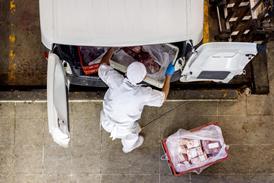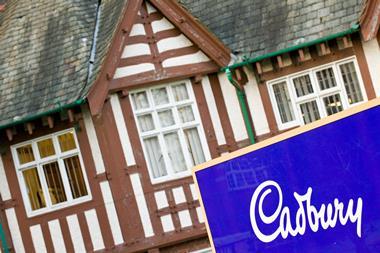Are we ready for supermarket shelves that monitor our every move? It is a question we may all be forced to answer soon er rather than later. Mondelez International has announced plans to roll out ‘smart shelves’ to US supermarkets by 2015. The technology will take the form of display units near checkouts that will house Mondelez’s impulse products such as chocolate bars and chewing gum.
The aim of the digital units will be to provide consumers with a more personalised shopping experience and provide both brand and retailer with better customer intelligence.
Speaking to the Wall Street Journal this week, Mondelez CIO Mark Dajani said: “Knowing that a consumer is showing interest in the product gives us the opportunity to engage with them in real time. When people walk by, it’s a missed opportunity.”
“Smart shelves will be able to deliver a tailored message to customers”
So how will smart shelves work? Well, the technology is still in development, but they will use sensors and cameras with facial recognition technology to determine the gender and potential age of the customer. Weight sensors will detect if a product has been picked up and motion sensors not dissimilar to those used on Microsoft’s Kinect devices will then determine how the customer is interacting with it.
The shelves will also be able to deliver a tailored message to the consumer. So for instance, if a teenage girl is detected, screens attached to the shelves could play an advert that emphasises the low-calorie nature of Trident gum. A mum, who has picked up a Toblerone but seems hesitant about putting it into her basket, might be served with a money-off coupon to use at the checkout.
This ‘Minority Report’ reality is likely to unnerve many. Mondelez claims its sensors will not identify customers as individuals, only as a particular category of customer. But this is unlikely to satisfy everyone. Earlier this year, US fashion retailer Nordstrom installed sensors to track the movements of consumers in-store, using signals from their mobile phones. The aim was to better understand how many people came through the door, how many were repeat customers and to track their browsing habits. Data that most e-commerce sites rely on and take for granted. But Nordstrom was forced to abandon the trial due to the strength of negative reaction from its customers.
In many ways, smart shelves and other customer recognition technologies are the physical manifestation of the current state of online advertising. The ubiquity of cookies means we are increasingly served the same advert from the same brand, regardless of which websites we visit. That said, while we may have come to terms with being tracked online, brands and retailers should not automatically expect the same weary acceptance when it comes to tracking consumers in the real world.
Daljit Bhurji is global MD of integrated communications consultancy Diffusion



















No comments yet